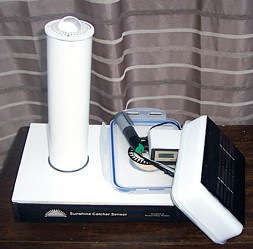Welcome to Weather-Above
Sensor connected
to an analog clock,

The sunshine recorder has been built in-house, it is designed to record how much sunshine has been captured during each day. The device has an analogue clock which displays how much sun we have received, and a output for a EL-USB-5 Counter, Event and State USB Data Logger ,giving you an accurate account of the duration of sunlight each day. It is a very versatile mobile unit intended to be used in a variety of areas. I will put more details on the website once I have completed 12 months of testing. This instrument could also be converted for a USB port and a one wire weather station add-on.
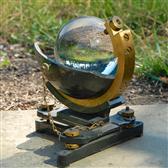
The Campbell–Stokes recorder (sometimes called a Stokes sphere) is a kind of sunshine recorder. It was invented by John Francis Campbell in 1853 and modified in 1879 by Sir George Gabriel Stokes. The original design by Campbell consisted of a glass sphere set into a wooden bowl with the sun burning a trace on the bowl. Stokes's refinement was to make the housing out of metal and to have a card holder set behind the sphere.
The unit is designed to record the hours of bright sunshine which will burn a hole through the card.
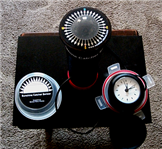
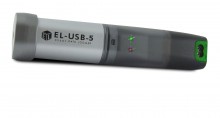
EL-USB-5
Counter, Event and State USB Data Logger
EL-WIN-USB (CONTROL SOFTWARE)
The software allows the following parameters to be configured:
• Logger name
• Record events, record state changes or count
events
• Triggering on rising of falling edges (see ‘Edge
Triggering’ section)
• Voltage or Volt free contact triggering
• Flash LED on event/state change
• Voltage range
• Time period for event counting (i.e count the
number of events every 10 seconds) can be set to
any period between 1 second to 99 hours. Maximum number of
events per time period is limited to 65,000.
First rough draft on how to make this device. please click on the link below for the PDF file
Added a solar panel to charge the 3 rechargeable AA batteries
21/04/13 Added a silver plastic transparent filter this makes a big difference to the calibration, and as made the instrument very accurate
If you find this information helpful, please consider making a small donation by clicking on the link on the main page. Thank you
Updated 31/03/2013
This is our latest project of our bright sun recorder,
To make this you need a piece of plastic white tubing, I'm using a piece of white guttering downspout
Solder to wires to the flexible film solar cell, then the flexible film solar cell wraps inside the tube
you need the black side is against the tube wall, next you need to mount a clear crystal half sphere ball into a piece of plastic, I cut out a circle from some foam x type plastic then cut out a centre hole where the glass sphere will be held, try to make this a tight fit you some good quality silicon sealant around the edge and push in
the glass ball, you need to have the dome protruding the plastic and have a flat top please see images,
Then you need two pieces of round plastic same size as the tube this will form the dark chamber, and the other will be for the bottom of the tube
Mount a red LED through the centre of one of the plastic discs and then connect this to the solar cell
when you get full bright sunlight the red LED will glow very bright, mount the lrd next to it this goes to the control module which will activate the really to start the clock recording full sun duration
calibration
The sensor needs to be vertical , you will need to adjust the sensitivity of the ldr by adjusting the small pot
when clouds go in front of the sun you want the really to open,
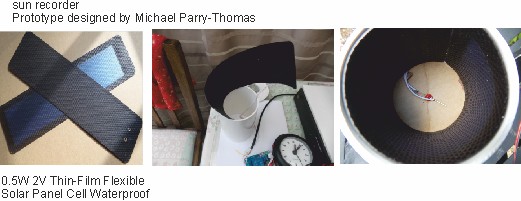
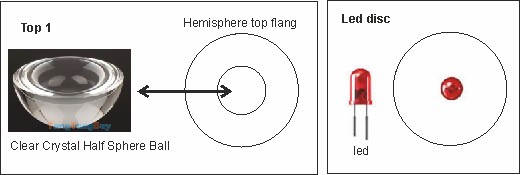
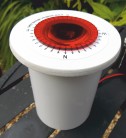
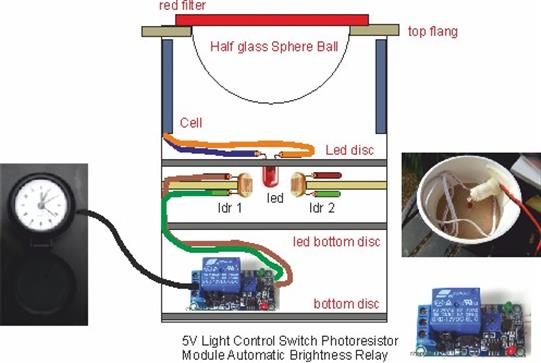
Updated 09/07/2016
Warning Important
This is a very early prototype
When making this project - testing, please do not leave unsupervised IN FULL SUN UNTIL YOU HAVE COMPLETELY STOPPED ANY
Magnifying process that may occur using the clear hemisphere glass dome
Suggestion
Use some Very fine sandpaper on the domed part to make it non-magnifying it should be a whitish semitransparent finish
Then continue testing and repeat the process with the sandpaper until no magnifying is possible
Please note the red glass filter .I am using is to diffused the focus magnifying Within the tube
Is a test I am currently trying out
Suggestion
Use some Very fine sandpaper on the domed part to make it non-magnifying it should be a whitish semitransparent finish



